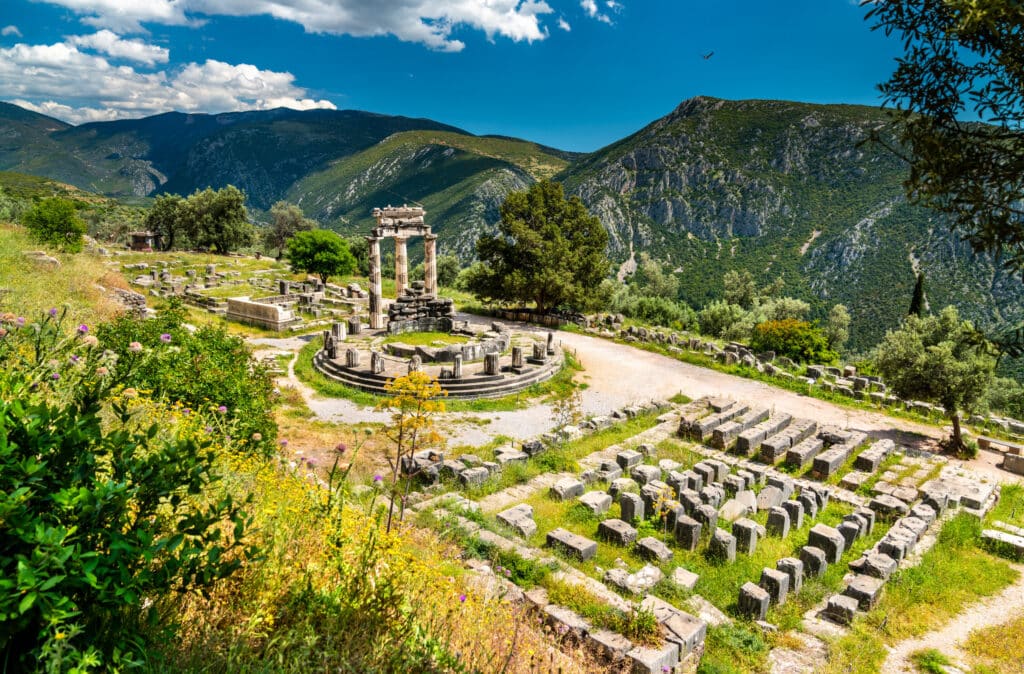
The entrance fee for the Archaeological Site of Delphi is 12€ for 2025. The reduced ticket price for children is 6€. Children under 5, EU citizens under 25 and students get in free, no need to buy an Delphi ticket. Every 1st Sunday from 1 Nov-31 Mar 2025 are free entrance for everyone.
The archaeological site of Delphi is situated today about 100 miles northwest of Athens, above the Gulf of Corinth, on the main route EO48. Tourists visiting the archaeological site of Delphi usually prefer guided day tours from Athens. You can choose these tours that cover transportation and all other expenses.
History of Delphi
Delphi, in central Greece, is the sanctuary (sacred location) of the god Apollo. A temple there contains the Delphic Oracle, the most famous one of the Greek world’s oracles (priestly fortune-tellers). Delphi was the religious center and the symbol of unity of the ancient Greek world in the sixth century BC.
Delphi is not one of the seven wonders of the ancient world. However, in terms of status and importance, few places were as powerful as Delphi, within two-and-a-half-hour driving distance from Athens. For a thousand years, rich and poor, kings and peasants came across the to visit the sanctuary of Apollo and paid homage to the god. His oracle was the spiritual center of their world.
According to mythology, Zeus (the king of all the other gods and men) sent out two eagles, one to the east and the other to the west, to find the navel of the world. The eagles met at the Delphi; consequently, Zeus marked the spot with a sacred stone called the omphalos (meaning navel), which was later held at the sanctuary of Apollo.
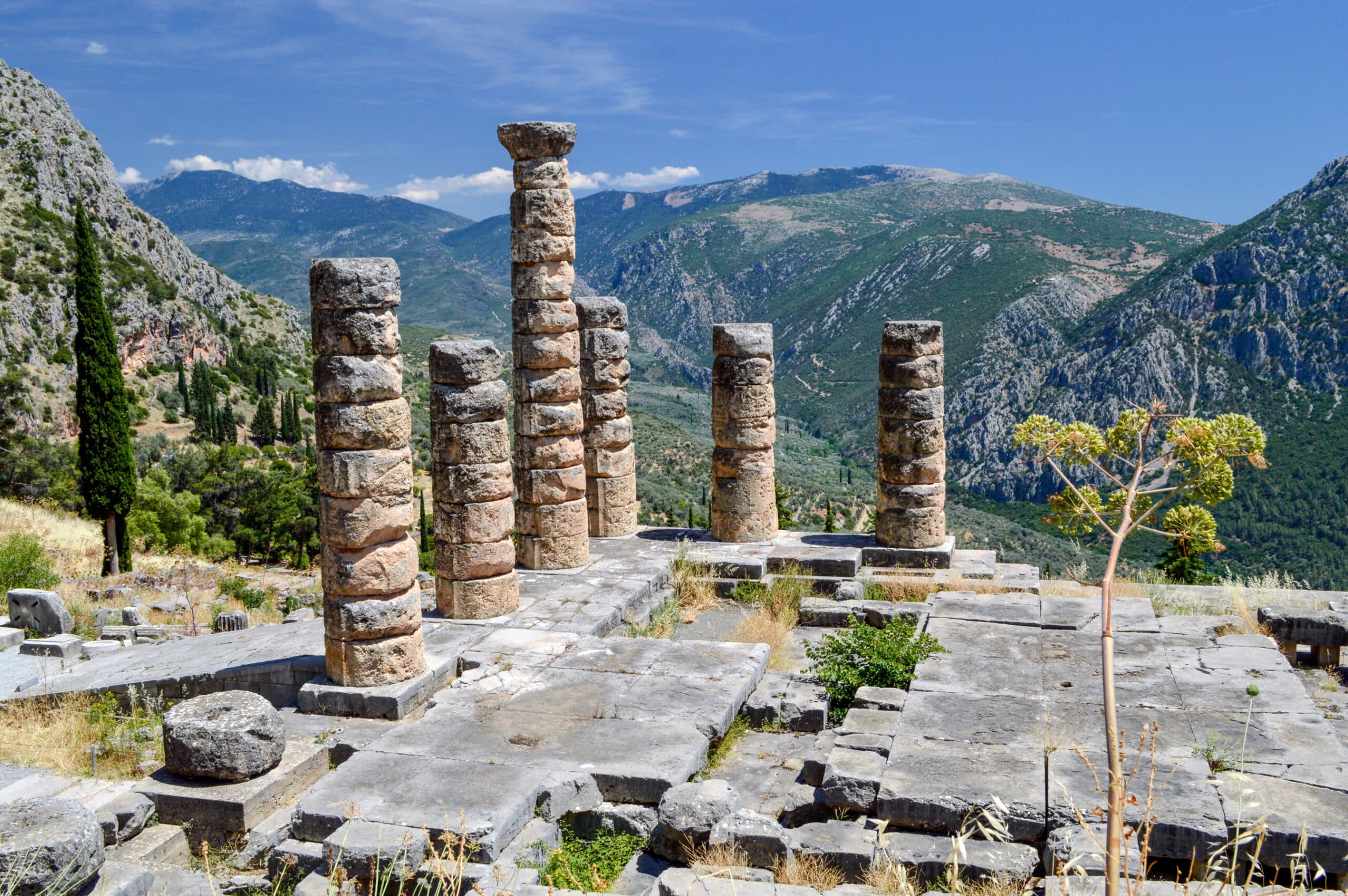
Temple of Delphic Apollo, Delphi
From the second millennium BC to the Mycenaean period, Gaia or Ge, the mother of the gods, was the first to give oracles on the site. Her daughter Themis succeeded her, followed by her sister Phoebe who called Apollo Phoebus the day of his birth on the island of Delos. Then Apollo, the son of Leto and Zeus, replaced them shortly after.
According to a Homeric hymn of the 8th century BC, Apollo built his first temple in Delphi after having killed Python, the dreaded serpent guardian of the sanctuary of Gaia. Respecting the law that he himself had established, Apollo was exiled for eight years to atone for his crime. Then he returned as the absolute master of the place, becoming Apollo Pythian whose oracles were interpreted by a woman titled as the Pythia who was selected for her virtue and chastity.
The Oracle of Apollo at Delphi was one of the most famous oracles in the ancient world and became one of the most prestigious pilgrimage centers of the times.
Whoever wished to obtain information from Apollo had to offer a sacrifice to the god before entering the sanctuary. For this purpose, a sheep or a goat was sacrificed in front of the altar, which was always outside of the Greek temples. Then one had to turn to the priests of Apollo. The person seeking advice presented his question for the god to the priests as written down on a lead tablet. During the excavations in Delphi, archaeologists have discovered many such tablets. After the priests had examined the question, they presented it to the main person in the oracle of Delphi. This was the Pythia which was the name of the priestess responsible for receiving the divine message in Delphi.
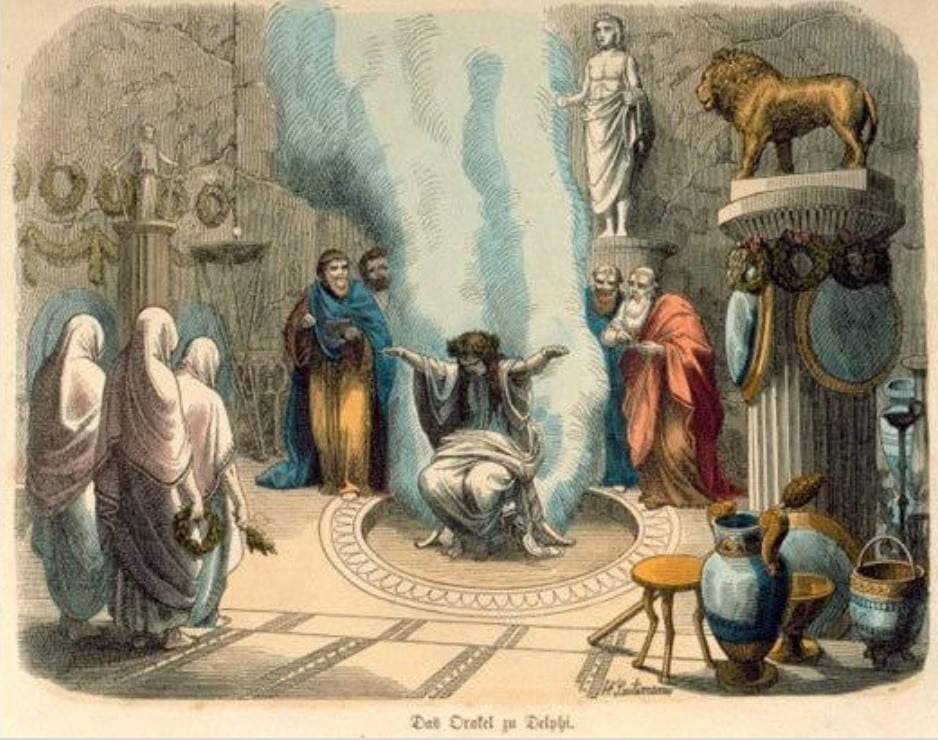
German Illustration, The Oracle of Delphi. Illustrator Heinrich Leutemann, 1865.
“Pythia” was not a proper name but a title. All the women who held this function in those centuries when the oracle site of Delphi was in operation bore this designation. There were fixed rules for the selection of the Pythia.
She had to be a peasant woman from the surroundings of Delphi, and she could not be younger than 50 years. The Pythia’s activity as a liaison between the god Apollo and the people seeking advice took place in the Adyton. This was a room completely inside the temple. Before she could start to receive the answers of the god, she had to purify herself in a spring, drink from this spring, and eat a laurel leaf. Only then had she achieved that cultic purity with which she was allowed to appear before Apollo. After that, she would take a seat on a tripod, which was built over a crevice in the earth. Mysterious vapors would emanate from this crevice. To this day, it is not clear exactly which substances were involved, but it was clear that vapors had a kind of trance function. Then she was ready, as Apollo’s right arm, to answer the questions that the priests handed her.
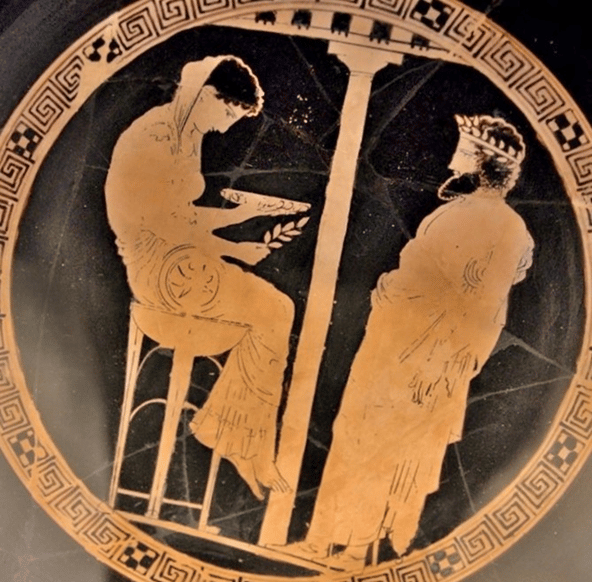
The Pythia on her tripod giving an oracle on a kylix in the Altes Museum in Berlin.
Only the priests could understand the words. To outsiders, they must have seemed like an incomprehensible murmur. The priest on duty had the task of translating the words of the Pythia into understandable Greek.
The questioners did not always leave Delphi in a satisfied mood. This was true both for those who had come for political advice as representatives of a king or a state and for people who had been on private business. A specialty of the oracle of Delphi was that the Pythia or the priests interpreting it often gave ambiguous answers. This was not incompetence, but there was a clear intention behind it.
The oracle of Delphi did not want to lose its good reputation through false predictions. Thus, the Pythia would give answers that could always be interpreted as correct and accurate in case of doubt. Also, visiting Delphi was very costly.
Although the information was given free of charge in principle, the visitors were expected to reciprocate with generous donations and gifts. The treasuries of Delphi were always well filled for this reason. If Delphi had gotten a reputation for misreading the future and giving bad advice, there would have been financial repercussions. It was better to keep room for maneuver in the answers.
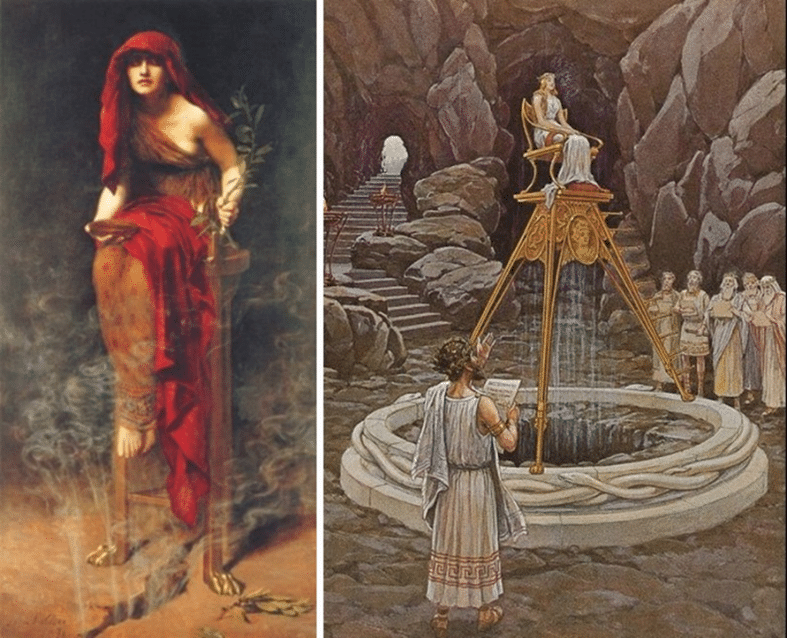
Priestess of Delphi (1891) by John Collier, showing the Pythia sitting on a tripod with vapor rising from a crack in the earth beneath her. (right) – Pythia, the Delphi Oracle. J. Augustus Knap (left)
The Kroisos Example
The classic example of ambiguous information from the Oracle of Delphi was King Kroisos. This was the real name of that fabulously rich ruler who is commonly known as “Croesus”.
Kroisos was the 6th century BC king of Lydia, a countryside in the west of present- day Turkey. At that time, the Persians, who were then the eastern neighbors of the Lydians, began to spread westward. Thus, Lydia also came into the sights of the Persian conquerors. Kroisos was not sure how to act. Should he wait for the Persians and then try to stop them? Or should he risk going out to meet them? In his distress, he turned to the oracle at Delphi. The Pythia gave him the answer that if he crossed the Halys, he would destroy a great empire. The Halys was the border river between Lydia and Persia. Kroisos was delighted because he thought that the great empire that he was going to destroy was the empire of the Persians. He crossed the Halys with his army, fought the Persians, and suffered a crushing defeat. The new rulers in Lydia were now the Persians.
Kroisos then sent messengers to Delphi, who complained vehemently that the god and the Pythia had given them false information. But the priests gave him to understand that Kroisos had misinterpreted the oracle. For the great empire that he would destroy in a campaign against the Persians was, of course, not the empire of the Persians but his own kingdom.
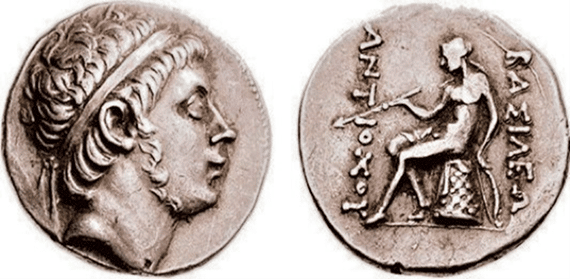
This coin was minted depicting Antiochus Hierax of the Seleucid Empire from the mint in Sardis. The reverse side depicts Apollo sitting on the omphalos.
For over 1.000 years, the oracle of Delphi maintained its significance. Even the Romans, who took over the rule in Greece from the 2nd century BC, liked to ask the Pythia.
Even Emperor Nero, who ruled from 54 to 68, once sought information about his future. “The number 73 indicates the time of your fall,” Pythia told Emperor Nero. Nero took this saying to mean that he would die in his 73rd year. Since he had been born in 37 AD, he would have had until 110 AD in this case. But already in 68 AD, when Nero was just 30 years old, he was forced to commit suicide by his political opponents. His successor was the 73-year-old Galba.
The end came for the Oracle of Delphi at the end of the 4th century AD. The Roman emperor elevated Christianity to the state religion and banned all other cults. Since the Oracle of Delphi was a sanctuary of the god Apollo, it was closed.
A Christian city was then established on the site of the sanctuary before its disappearing in the 7th or 8th century AD. Modern excavations commenced on the site in 1892 and have since revealed a wealth of invaluable information.
Plan of the Archaeological Site of Delphi
The Temple of Delphic Apollo
The Temple of Delphic Apollo, as it survives, dates only to the fourth century BC, but the foundation is original to an earlier version from the sixth century, which replaces an even older seventh-century version. The temple was home to the Oracle of Apollo. Inside the temple was the seat of the Pythia, the priestess who presided over the Oracle and delivered the prophesies inspired by Apollo. Delphi was the most important oracle in the Greek world.
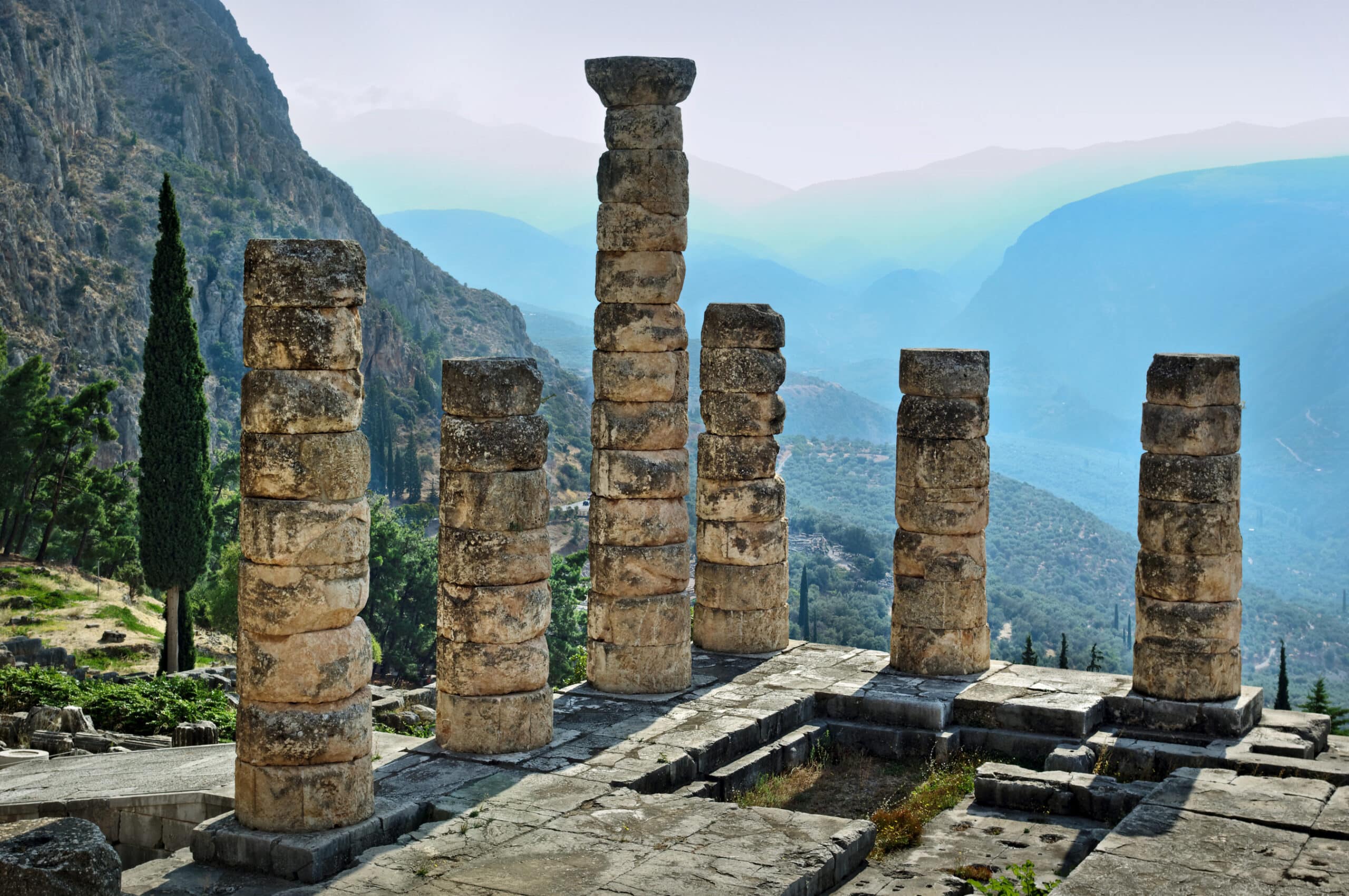
Temple of Apollo, Delphi – Entrance Fee
Altar of the Chians
On the east side of the Temple of Apollo located the Great Altar, or the Altar of the Chians, dedicated to the people of the island of Chios, in the 5th century BC, after their successful stand against the Persians.
The Athenian Treasury
A small building in Doric order, built by the Athenians at the end of the sixth century BC to house their offerings and other votive objects for Apollo.
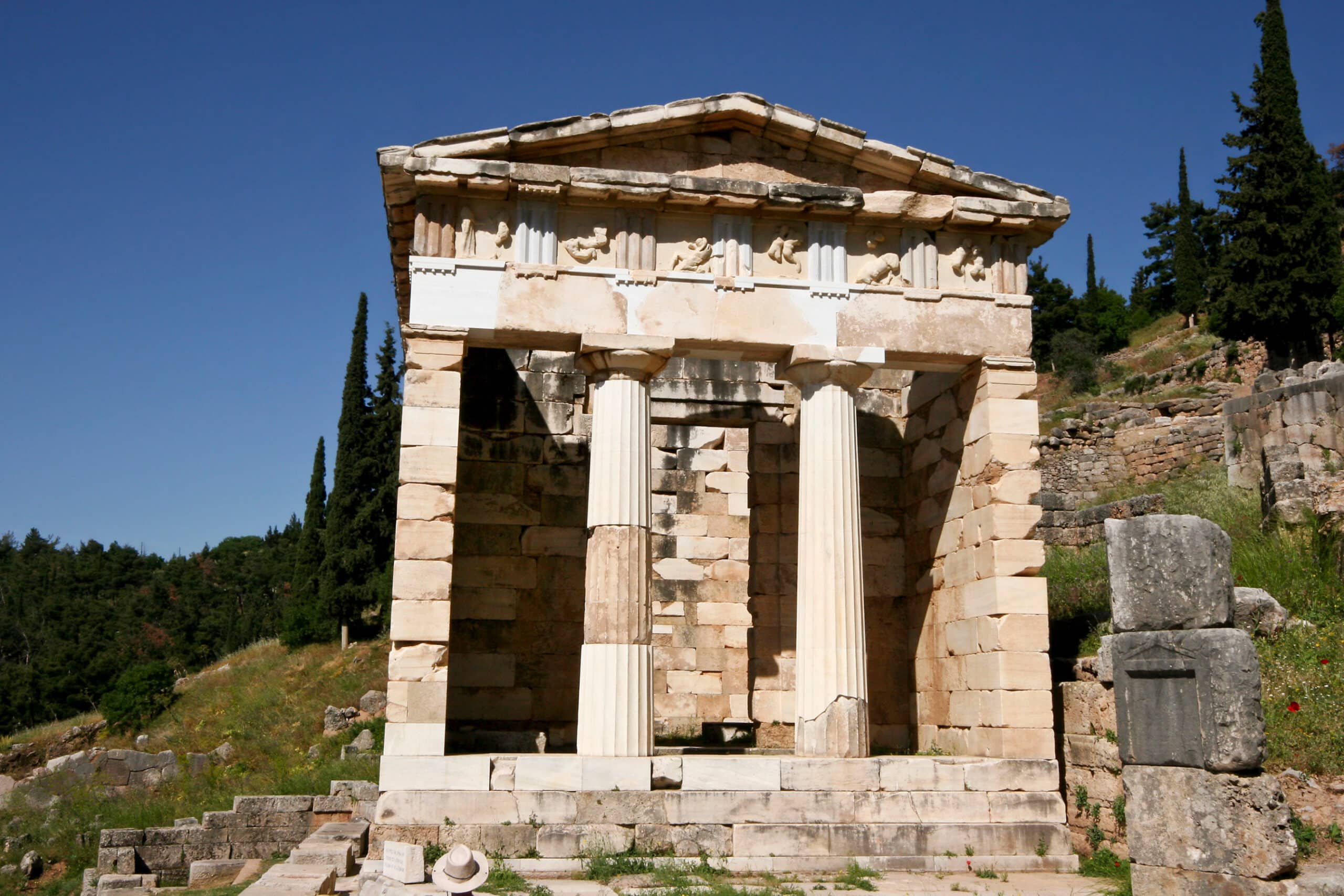
Athenian Treasury in Delphi, Greece.
Stoa of the Athenians
The Stoa of the Athenians is an ancient portico in the Delphic Sanctuary, Greece, located in the south of the Temple of Apollo. Built-in the Ionic order, it has seven fluted columns, each made from a single stone. According to an inscription, it was dedicated to the Athenians after the Persian Wars.
The Theatre
Originally built in the fourth century BC, its visible ruins actually date from the Roman imperial period. The singing of hymns to Apollo was an ancient tradition at Delphi, and the area occupied by the present theatre most likely served as the place where these musical competitions were traditionally held.
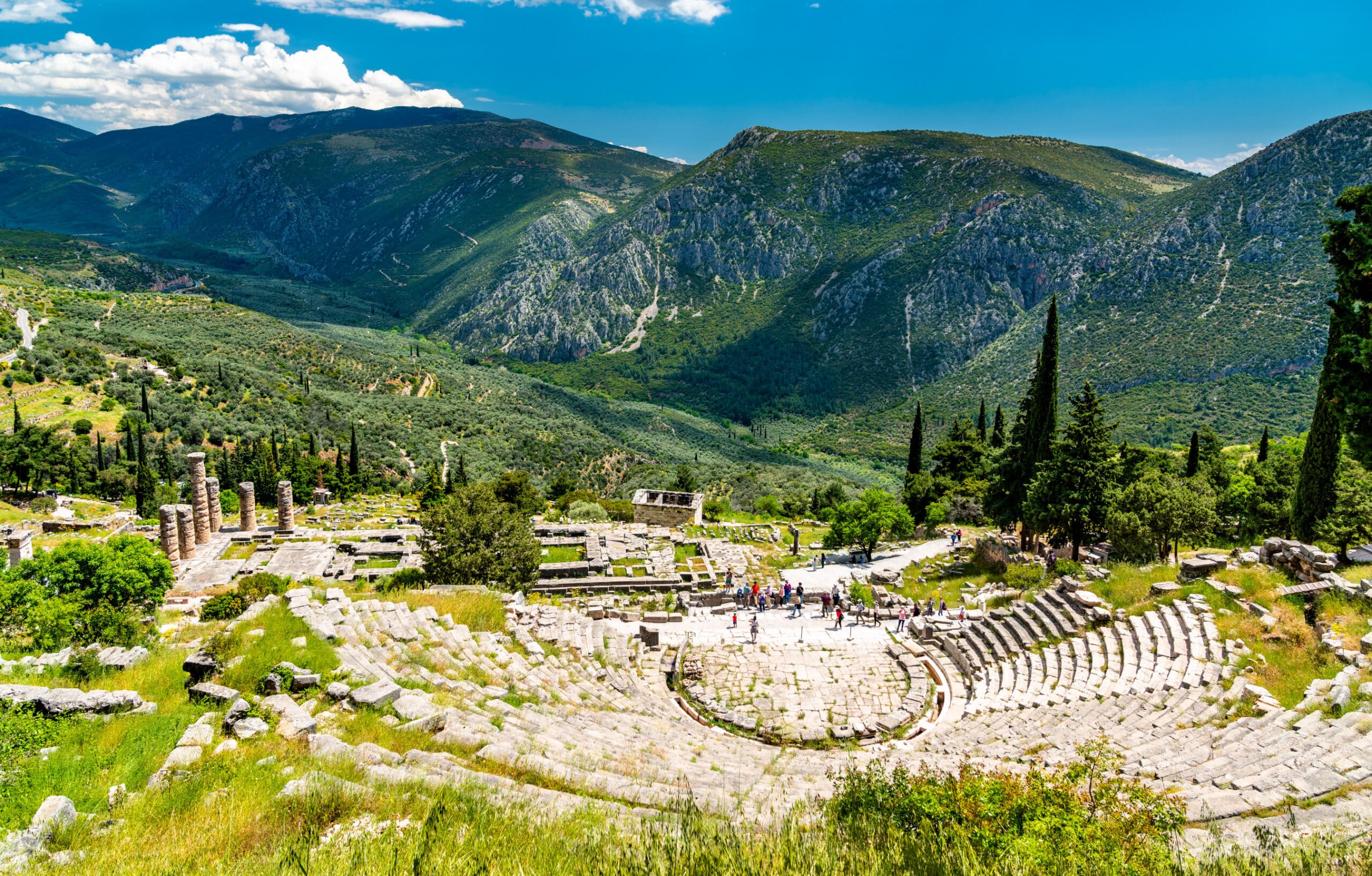
The ancient theatre at Delphi in Greece – Entrance Fee
The Stadium
The stadium of Delphi is one of the best-preserved monuments of Delphi. It is situated in the northwest of the theatre, above the sanctuary of Apollo, in the highest part of the Delphi. It was constructed in the fifth century BC and remodeled in the second century AD. The Pan-Hellenic Pythian Games, one of the forerunners of the Olympic Games, took place in this stadium. Its track is 177.55 m long, and 25.50 m wide.
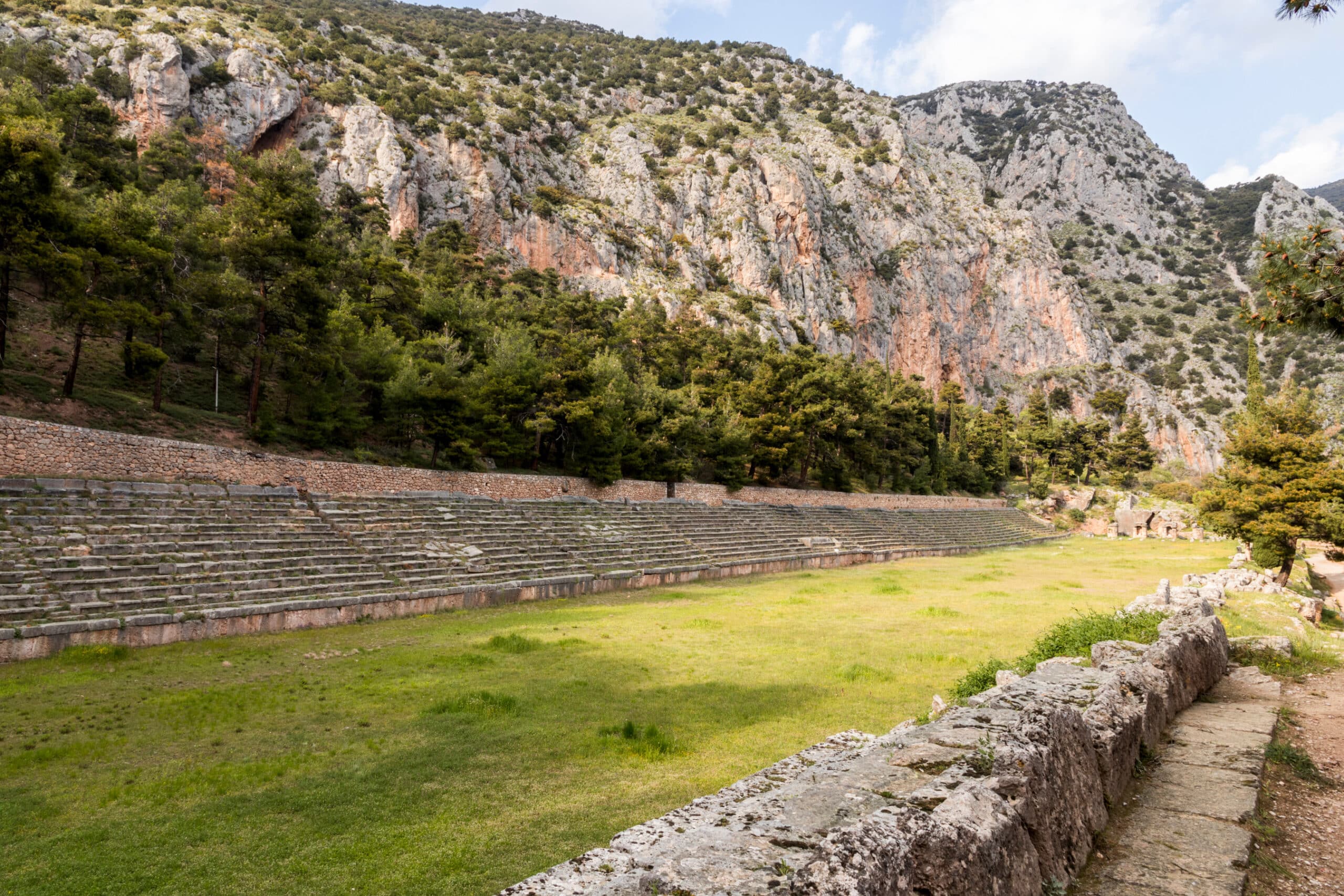
Delphi, Greece. The Stadium.
Tholos
The Tholos is a circular building within the sanctuary of Athena Pronaia, built by the architect Theodore the Phocaean in 380-360 BC. The Tholos of Delphi may have sheltered an important statue, although the exact purpose of the structure is unknown. It had 20 Doric columns on the circular colonnade and 10 or 13 Corinthian semi-columns in the interior of the cella.
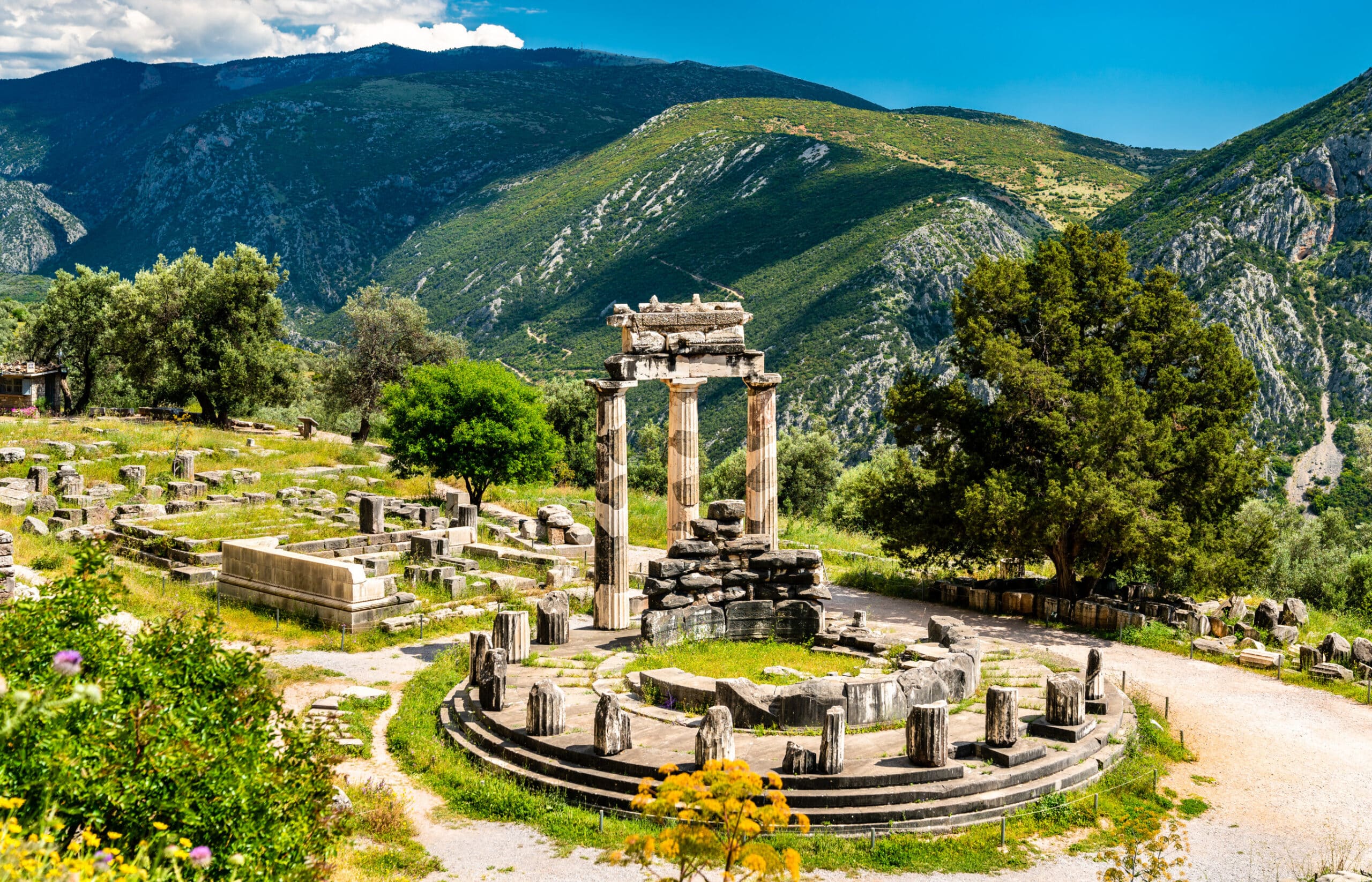
Tholos, Delphi
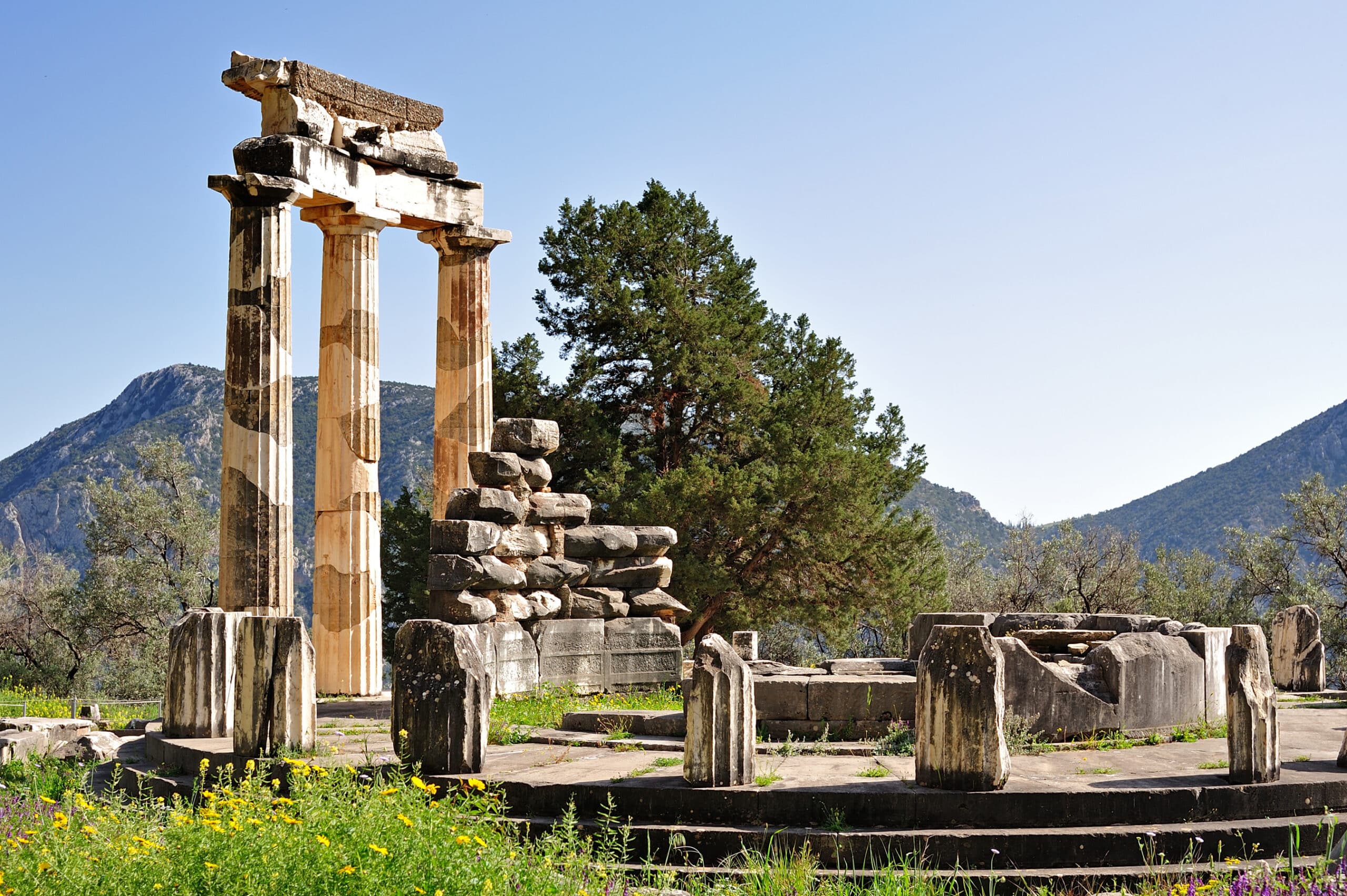
Tholos of Athena Pronoia
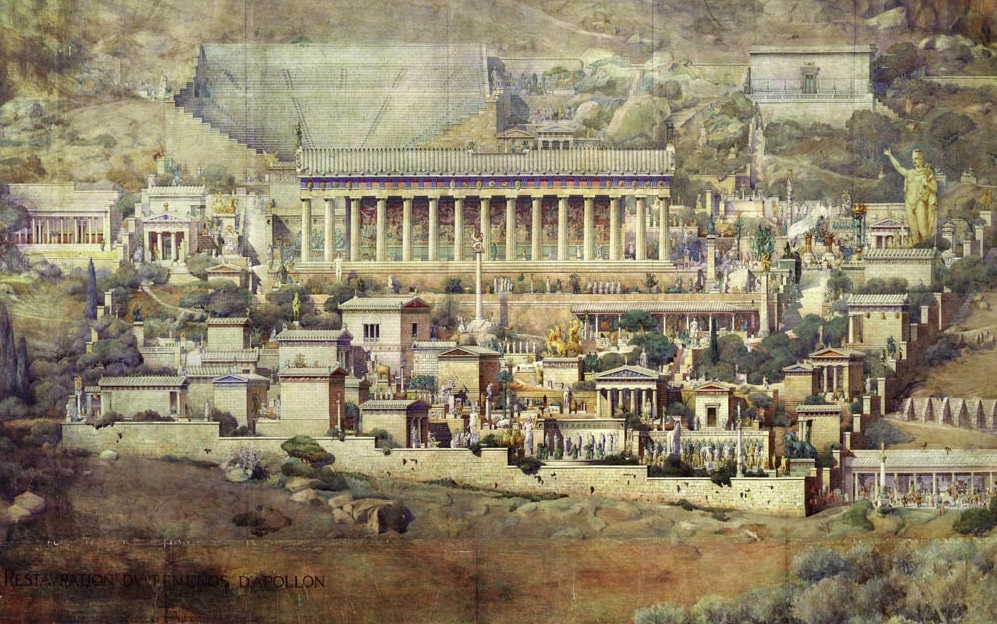
Albert Tournaire’s recreation of Apollo’s Temple at Delphi and the Sacred Way leading up to it.
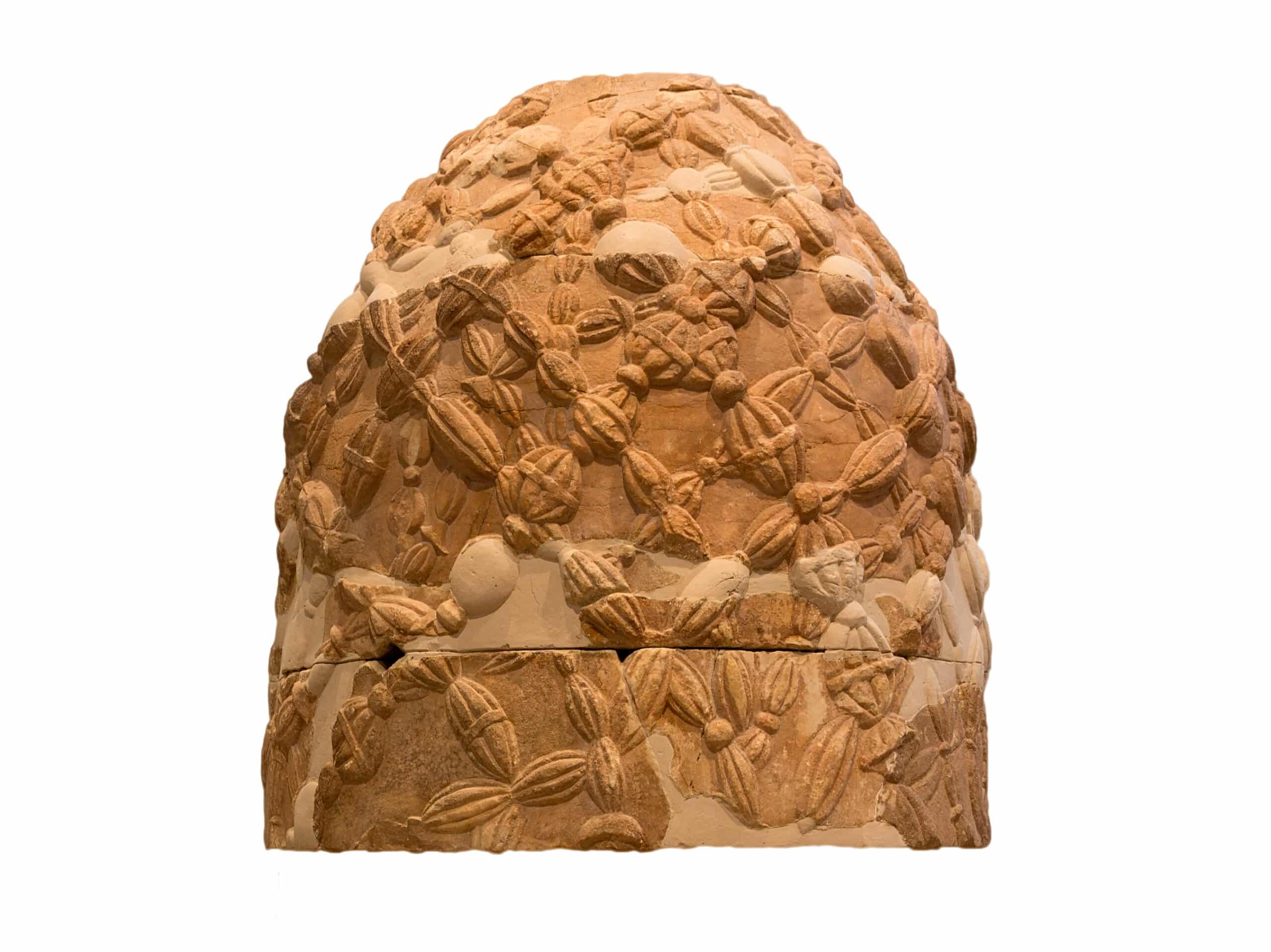
The Omphalos stone from Delphi, Greece.
The archaeological site of Delphi is one of the most visited sites by tourists visiting Greece after the Acropolis and the Agora in Athens. As we mentioned at the beginning of our article, we recommend you to join the guided tours departing from Athens for the archaeological site of Delphi.
Sorry, there were no items that matched your criteria.
